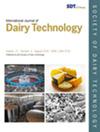Greenhouse gases emission from dairy industries and promising abatement processes and technologies
Abstract
Background
The dairy industry is a growing contributor to global greenhouse gas (GHG) emissions, primarily through methane and nitrous oxide release. Historically, climate mitigation efforts have prioritised fossil fuel reduction, but the substantial environmental impact of dairy production is now increasingly recognised.
Aims and Scope
This review synthesises global studies from 2004 to 2025 on GHG emissions in the dairy industry, focussing on developing countries. It presents promising technologies for dairy GHG abatement, identifies key implementation barriers and outlines research priorities to guide sustainable practices.
Method
A systematic literature review was conducted using Scopus, Web of Science, and PubMed, prioritising peer-reviewed studies on dairy GHG emission quantification and mitigation technologies.
Major Findings
Anaerobic digestion (AD) is identified as the most promising mitigation technology, capable of reducing methane emissions by 50–70% while producing renewable biogas and organic fertiliser. Co-digestion can increase biogas yields by 10–30% through enhanced carbon-to-nitrogen balance. It offers a scalable, sustainable waste-to-energy solution to dairy GHG emissions. 3-Nitrooxypropanol (3-NOP) feed additives demonstrate up to 40% methane reduction in controlled settings. However, its widespread adoption faces significant hurdles, including regulatory approval processes varying by region, consumers' food safety concerns and practical on-farm implementation challenges. Despite the availability of multiple mitigation strategies, implementation in developing countries remains constrained by capital costs, technical expertise and infrastructure gaps. Overcoming these barriers is essential to unlock the global potential of these technologies for meaningful dairy sector decarbonisation.
Scientific Implications
Effective GHG mitigation in the dairy sector requires integrated, region-specific solutions. Targeted policy support, public–private partnerships and access to carbon finance are essential for scaling technologies such as AD. Broader adoption of mitigation tools, combined with sustainable manure and feed management practices, will be vital to achieving climate targets in both developed and developing economies.


 求助内容:
求助内容: 应助结果提醒方式:
应助结果提醒方式:


